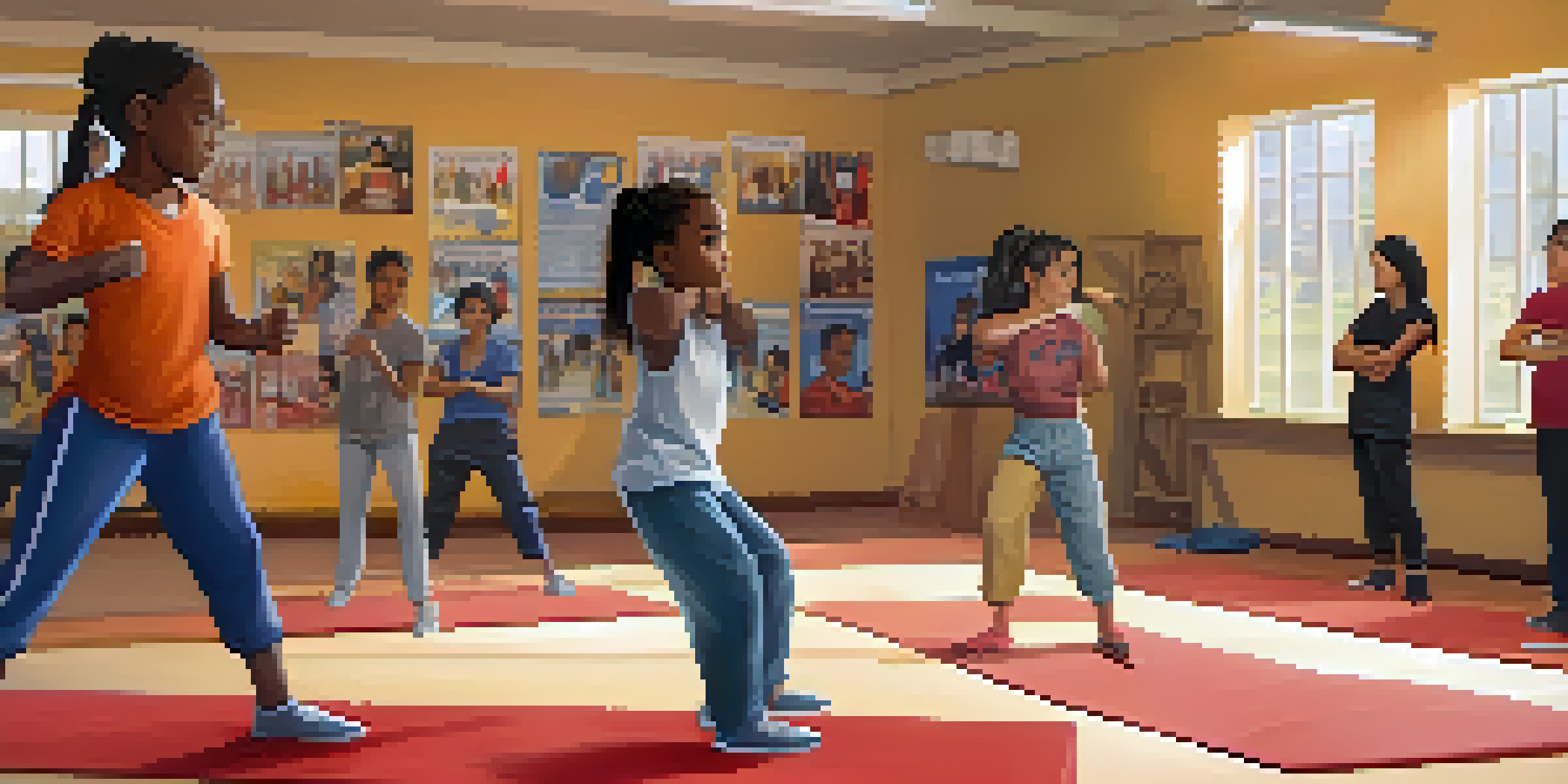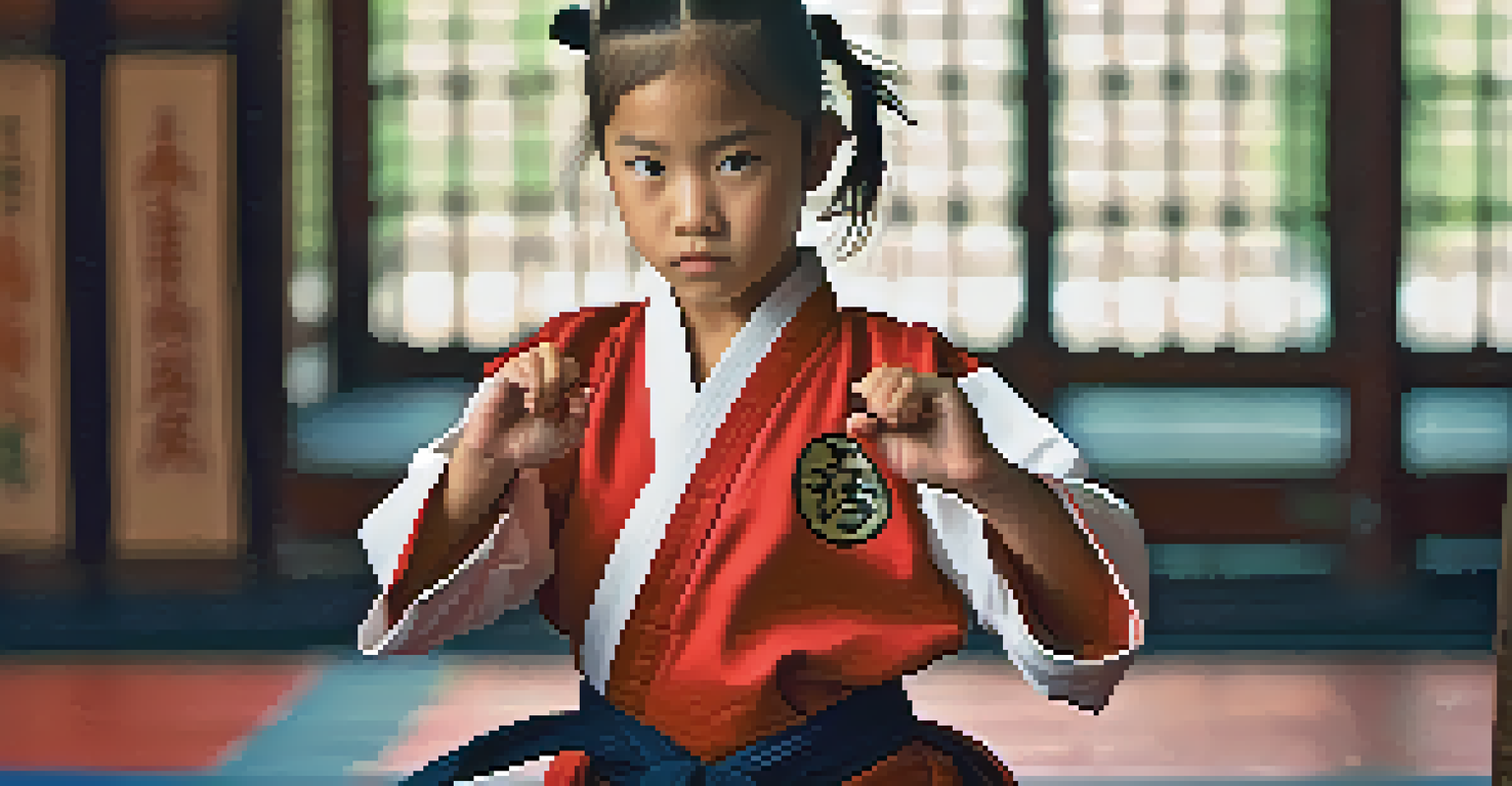Age and Intersectionality: Youth Perspectives on Self Defense

Defining Intersectionality in Youth Self Defense Context
Intersectionality is a concept that helps us understand how different social identities—like race, gender, and age—interact and affect individuals' experiences. For young people, these overlapping identities can significantly shape their views on self-defense. For instance, a young Black woman may have different concerns about safety than a young white male, due to how society perceives and treats them.
Intersectionality is not just about identity; it's about how those identities intersect to create unique experiences and challenges.
Understanding intersectionality is crucial for developing self-defense strategies that resonate with diverse youth experiences. It goes beyond a one-size-fits-all approach and encourages tailored discussions that consider various backgrounds. By acknowledging these differences, we can create more inclusive environments where all young people feel empowered to learn about self-defense.
In this way, intersectionality not only highlights the unique challenges faced by different groups but also encourages solidarity among youth. When young people recognize their shared struggles and strengths, they can work together to advocate for safer communities.
The Role of Age in Shaping Self Defense Perspectives
Age plays a significant role in how young people view self-defense. Adolescents and teenagers often experience a unique blend of vulnerability and resilience, which influences their approach to safety. They may feel invincible at times, leading to risky behaviors, but they are also acutely aware of their surroundings and the potential threats they face.

For younger youth, self-defense might be viewed more as a physical response to immediate threats, while older teens may begin to understand the importance of verbal de-escalation and awareness. This progression reflects their cognitive and emotional development, which shapes their readiness to engage with self-defense concepts.
Intersectionality in Self-Defense
Intersectionality highlights how overlapping identities like race and gender influence young people's experiences and perceptions of self-defense.
Moreover, age can affect the types of self-defense training that appeal to young people. Programs that incorporate technology, social media awareness, and mental health considerations often resonate more with today’s youth, making self-defense not just about physicality, but also about navigating complex social dynamics.
Cultural Influences on Youth Self Defense Views
Culture significantly shapes how young people perceive self-defense. For instance, in some communities, martial arts are celebrated and seen as vital skills for empowerment, while in others, such practices might be stigmatized. Understanding these cultural nuances is essential for facilitating meaningful discussions about self-defense.
The most common way people give up their power is by thinking they don’t have any.
Additionally, media representation plays a huge role in shaping youth perspectives. Movies and TV shows often depict self-defense in dramatic and sometimes unrealistic ways, which can either inspire or intimidate young viewers. By critically engaging with these portrayals, youth can gain a more nuanced understanding of what self-defense truly encompasses.
Cultural narratives also influence who is seen as a 'victim' or a 'perpetrator' in self-defense scenarios. For example, societal stereotypes can lead to differing perceptions of who deserves protection and who is viewed with suspicion. Addressing these biases is crucial for creating equitable self-defense conversations.
Community Programs and Their Impact on Youth Empowerment
Community programs focused on self-defense can be incredibly empowering for young people. These initiatives often provide safe spaces for youth to learn skills that not only enhance their physical safety but also boost their confidence. Programs that incorporate peer support are particularly effective, as they create a sense of belonging and shared purpose.
Moreover, when these programs include discussions around intersectionality, they can address the unique fears and challenges faced by different youth groups. Workshops that invite participants to share their experiences foster an environment of empathy and understanding, which is crucial for personal growth.
Mental Health's Role in Safety
Incorporating mental health education into self-defense training is essential for helping youth manage fear and anxiety in threatening situations.
As a result, community programs can serve as catalysts for broader social change, equipping youth with the knowledge and tools they need to advocate for themselves and others. This empowerment can ripple through communities, promoting a culture of safety and respect.
The Importance of Mental Health in Self Defense Training
Mental health is an often-overlooked aspect of self-defense training for youth. Understanding the psychological components of fear, anxiety, and trauma can enhance the effectiveness of self-defense strategies. Young people need to recognize that their mental well-being is just as important as physical readiness in threatening situations.
Incorporating mental health education into self-defense training not only prepares youth for confrontations but also equips them with coping mechanisms for stress and anxiety. Techniques such as mindfulness and breathing exercises can help young people manage their emotions and reactions in tense situations.
Furthermore, fostering open conversations about mental health encourages young people to seek help when needed. This holistic approach to self-defense acknowledges that feeling safe encompasses both physical skills and emotional resilience, ultimately leading to a more comprehensive understanding of personal safety.
Youth Activism and Self Defense Advocacy
Youth activism has emerged as a powerful force in advocating for self-defense rights and safety in communities. Young people are increasingly using social media platforms to raise awareness about safety issues and to promote self-defense education. This activism not only amplifies their voices but also fosters a sense of agency and empowerment.
Many young activists are drawing attention to the intersectionality of self-defense, highlighting how different identities affect experiences with violence and safety. By sharing personal stories and advocating for change, they are creating a more inclusive narrative around self-defense that considers the varied experiences of marginalized groups.
Youth Activism Drives Change
Youth activism leverages social media to advocate for self-defense rights, emphasizing the importance of diverse experiences in shaping safety conversations.
As a result, youth-led movements are shaping policies and community programs that prioritize safety and accessibility. Their efforts underscore the importance of involving young voices in conversations about self-defense, ensuring that solutions are informed by those most impacted.
Future Directions: Empowering Youth Through Education
Looking ahead, empowering youth through education on self-defense is crucial. Educational programs that integrate lessons on personal safety, self-awareness, and conflict resolution can help young people navigate their environments more effectively. By fostering critical thinking and decision-making skills, these programs prepare youth to handle challenging situations.
Moreover, as society continues to evolve, self-defense education must adapt to address new challenges. This includes integrating technology, such as online safety and cyberbullying prevention, into self-defense discussions. By staying relevant, these programs can ensure that youth feel equipped to tackle both physical and digital threats.

Ultimately, a comprehensive approach to self-defense education that embraces intersectionality, mental health, and community engagement will empower youth to advocate for their own safety and the safety of others. Through continuous learning and collaboration, we can help shape a future where all young people feel secure and respected.